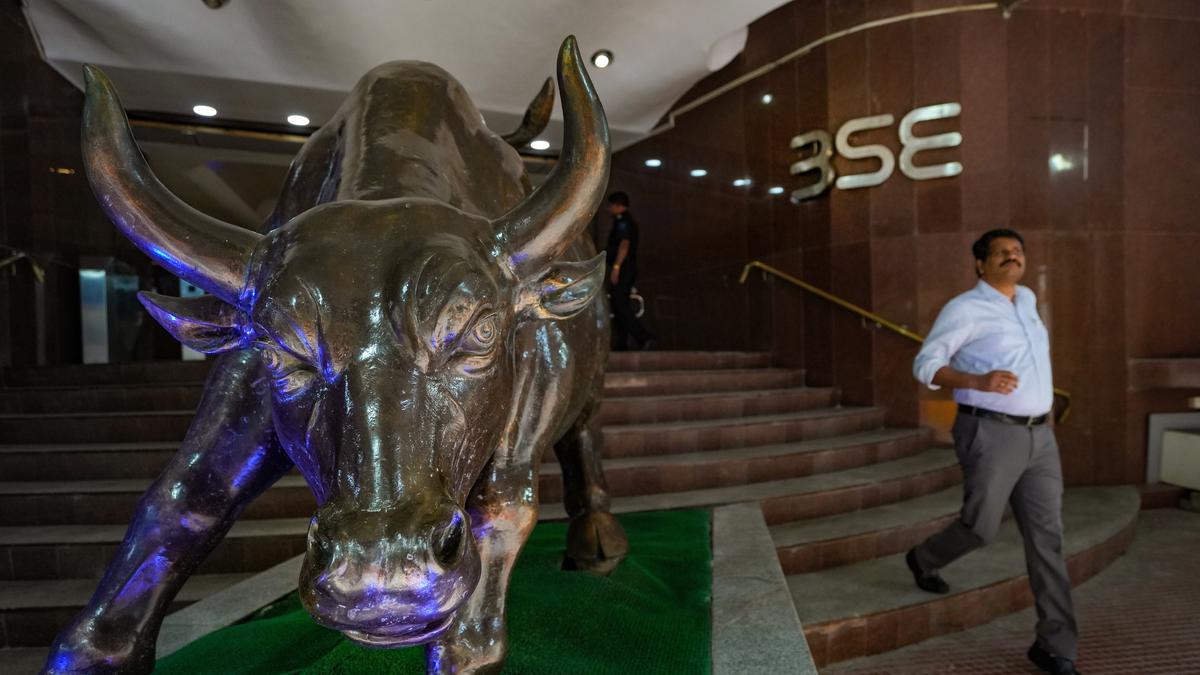
Sensex, Nifty bounce back after 8 days of fall; end nearly 1% higher
The Hindu
SBI, Axis Bank, IndusInd Bank, Tech Mahindra, HCL Technologies, Tata Consultancy Services, Maruti Suzuki, Tata Steel and Tata Motors were the major gainers.
Stock market benchmarks ended nearly 1% higher on Wednesday, halting their eight days of decline, amid gains in Asian and European equity exchanges.
The BSE Sensex advanced 448.96 points or 0.76% to settle at 59,411.08 after a positive beginning. During the day, it jumped 513.33 points or 0.87% to 59,475.45.
The NSE Nifty climbed 146.95 points or 0.85% to end at 17,450.90.
In the past eight days, the BSE benchmark had tumbled 2,357.39 points or 3.84%, and the Nifty declined 731.9 points or 4.22%.
From the Sensex pack, State Bank of India, Axis Bank, IndusInd Bank, Tech Mahindra, HCL Technologies, Tata Consultancy Services, Maruti Suzuki, Tata Steel and Tata Motors were the major gainers.
Power Grid and HDFC Bank were the laggards from the pack.
In Asian markets, Japan, China and Hong Kong ended in the positive territory.

The Union Budget unveiled on February 1, 2025, has come at a time of unprecedented global uncertainty and a flagging domestic economy. The real GDP growth is estimated at 6.4% for 2024-25 and between 6.3-6.8% for 2025-26, a far cry from >8 percent growth required annually to make India a developed nation by 2047. While much attention has been devoted to the demand stimulus through income tax cuts, not enough is said about the proposed reforms in urban development, tariff rationalisation, and regulatory simplification aimed at making Indian cities and corporates more competitive. Since the majority of economic activity is located in cities (urban areas account for ~55% of GDP) and produced by large corporates (~40% of the national output and 55% of India’s exports), the above-mentioned reforms have a pivotal role in improving India’s trend growth rate. Below we unpack each reform.












